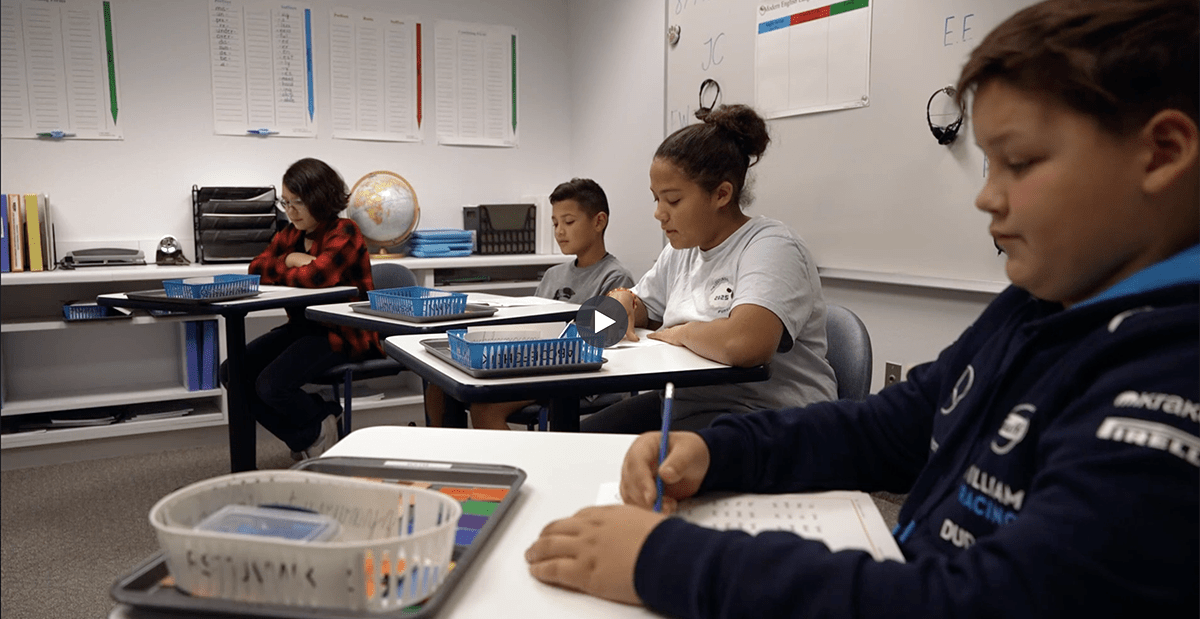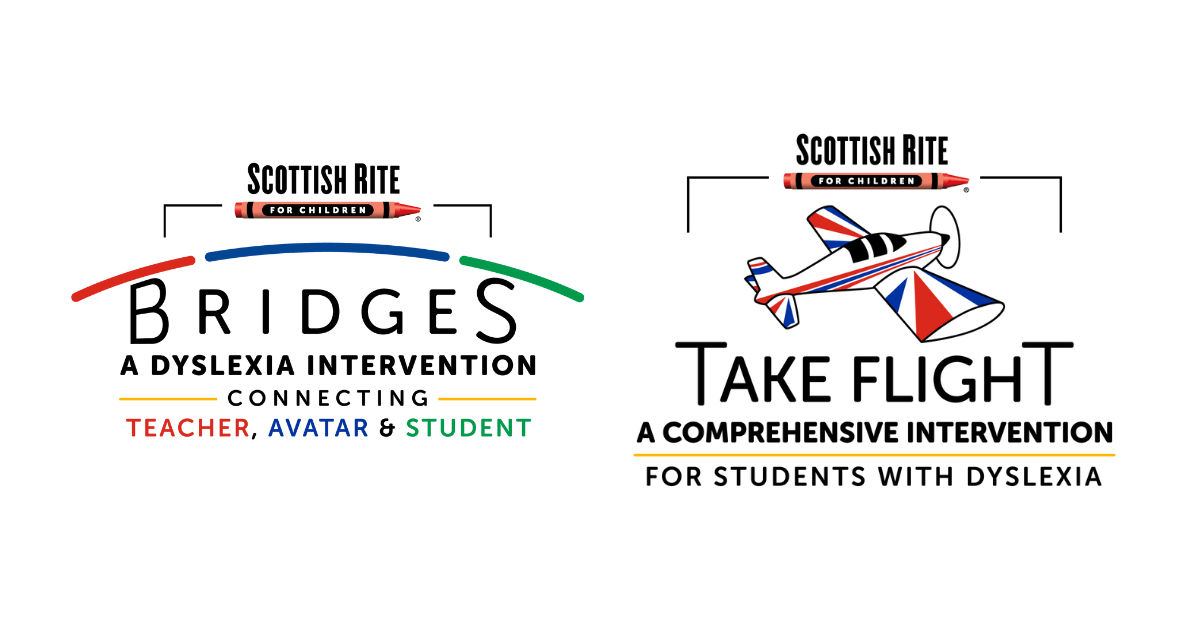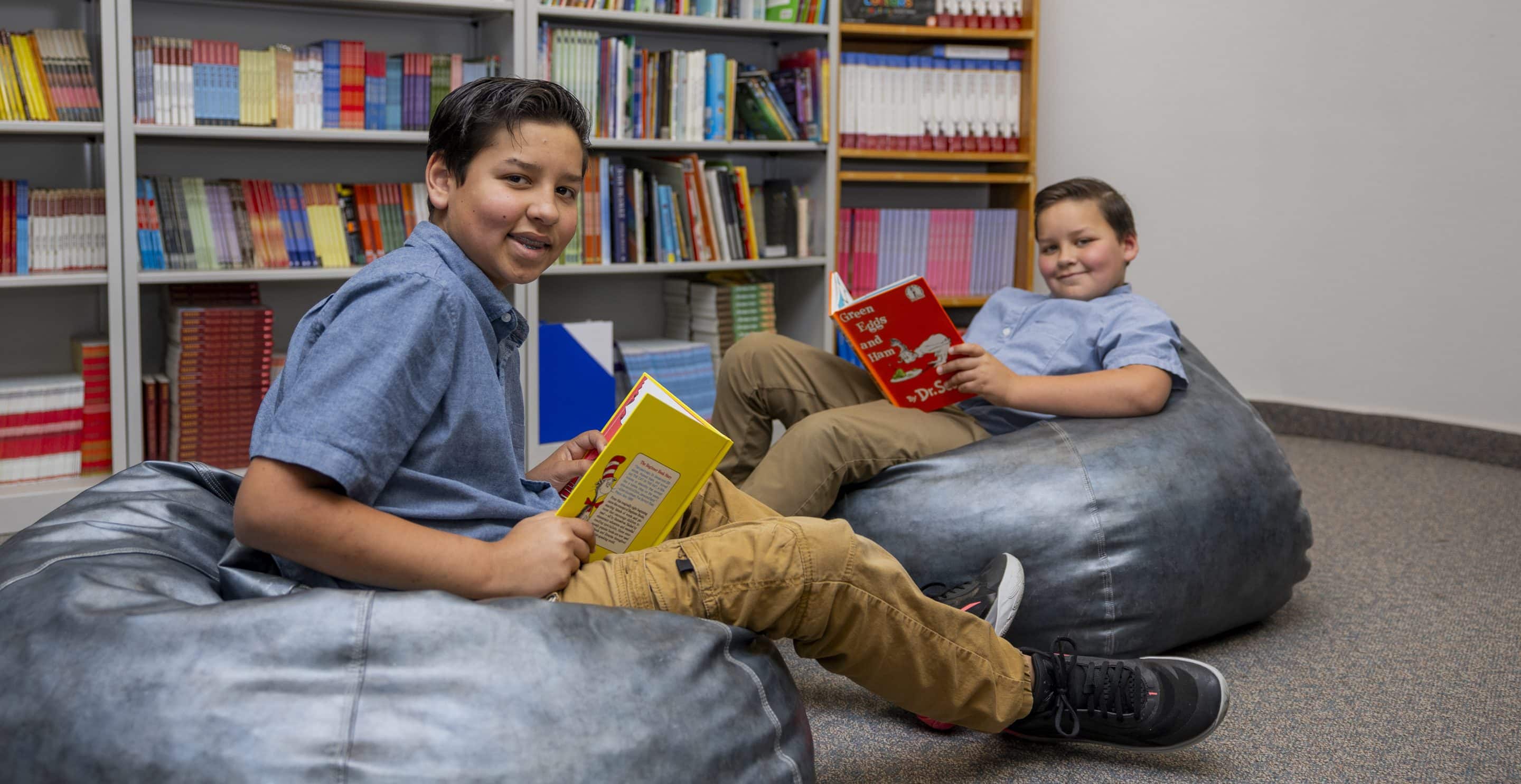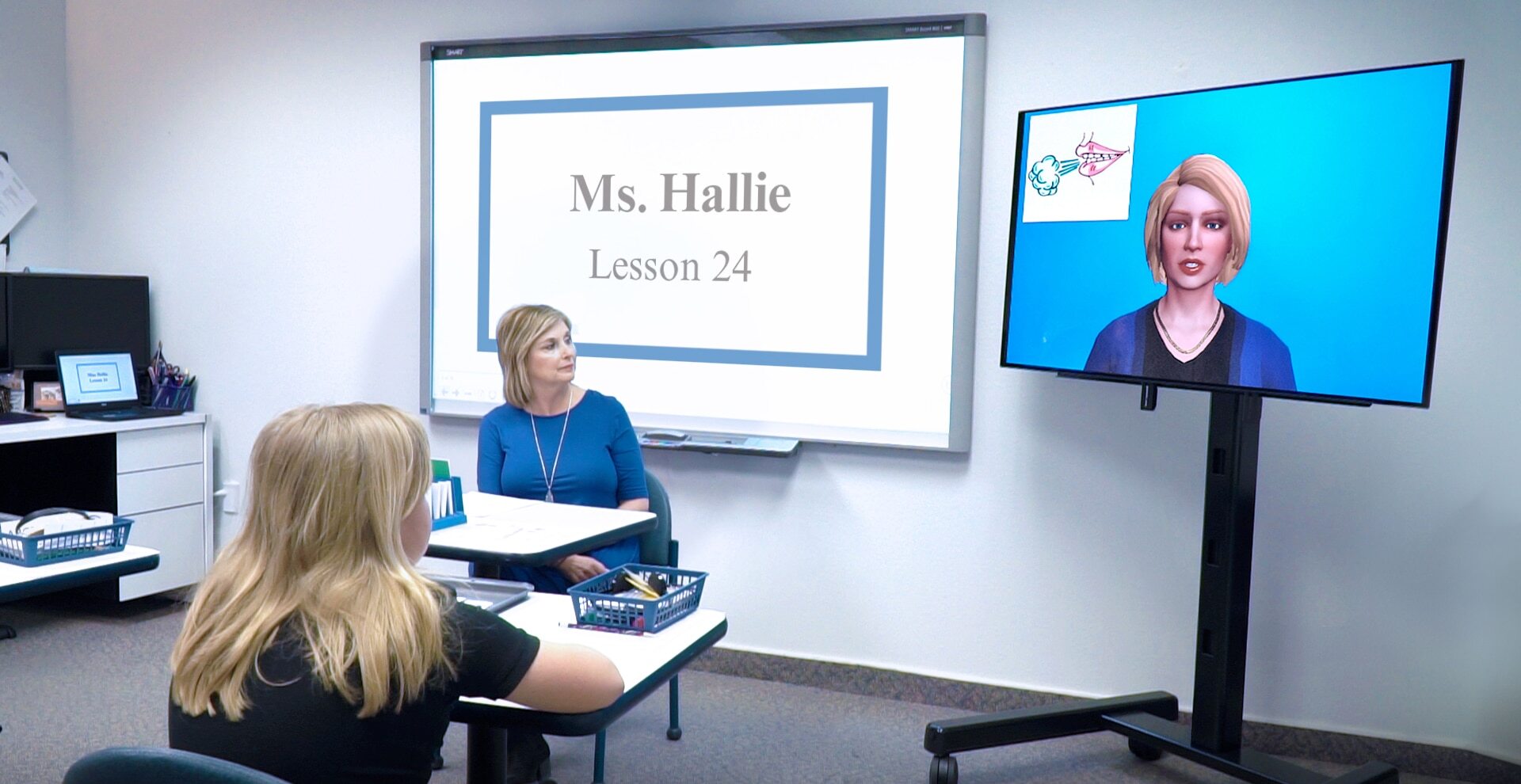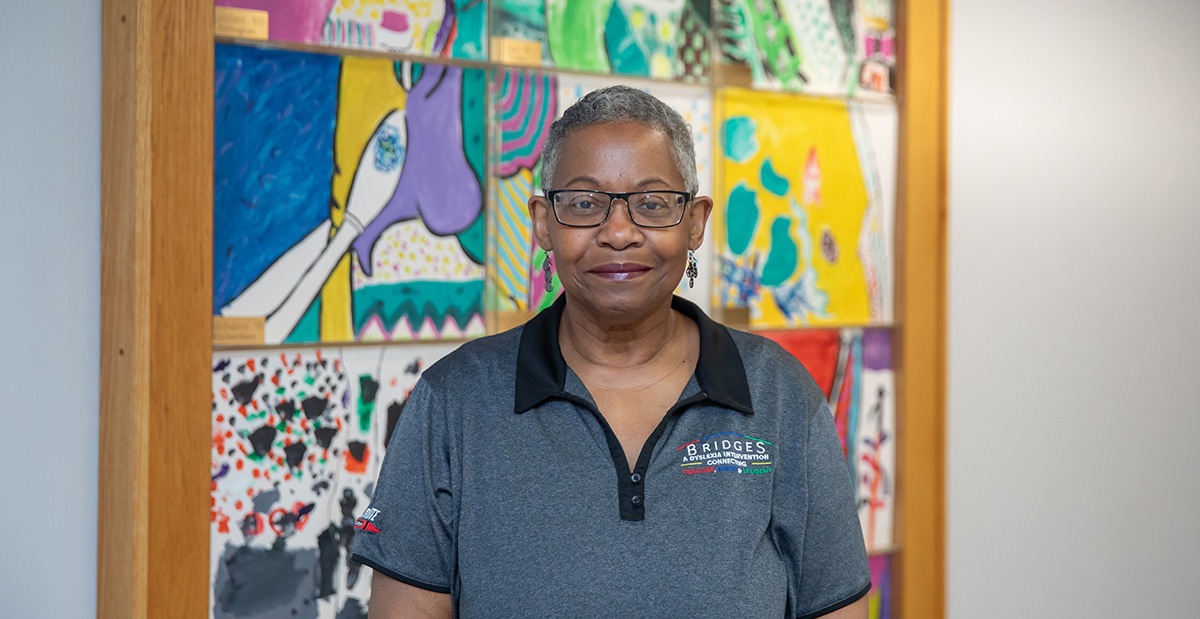Dyslexia – Educators & Trainers
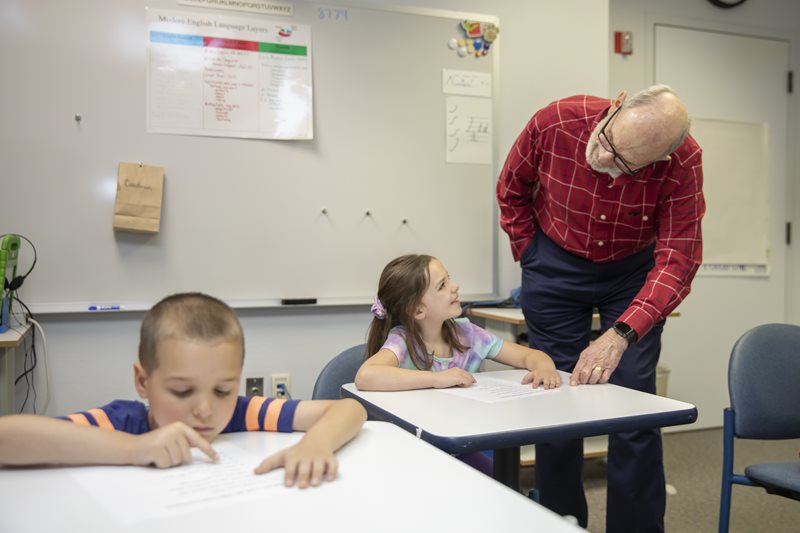
DYSLEXIA EDUCATOR RESOURCE CENTER
At Scottish Rite, we believe every child deserves the opportunity to succeed in reading and writing.
For more than 60 years, our internationally recognized team of physicians, educators and researchers have led the field in developing evidence-based educational interventions and high-quality training programs that empower educators to help children with dyslexia learn to read with confidence.
Our suite of reading interventions are the result of years of study and testing. We use a structured literacy approach to meet the unique needs of children with dyslexia at every developmental stage.
We also offer a range of accessible training programs that equip dyslexia educators with the experience and tools they need to help children succeed. Upon completion of training, participants qualify as Providers of Dyslexia Instruction at one of three levels (Academic Language Therapist, Dyslexia Practitioner, Certified Teacher).
Trusted by Educators, Approved by States
- All Scottish Rite programs meet state requirements for dyslexia intervention and training.
- Our programs are on the Texas Education Agency’s approved list of dyslexia interventions. They address all areas of instruction identified in the Texas Dyslexia Handbook.
- We’re also on many other state-approved dyslexia intervention lists, including Alabama, Arkansas and Colorado.
With a proven track record of success, our education interventions and training programs are trusted by educators around the country to deliver real results and help children thrive.
New customer? Request an account.
RESOURCES FOR EDUCATORS
Curriculum
The Luke Waites Center for Dyslexia & Learning Disorders has been a leading resource in the field of reading intervention for more than 60 years. Our staff has developed curricula that have taught hundreds of thousands of children to read all over the world. We strive to improve outcomes for students with dyslexia and reading difficulties by providing tailored intervention programs and increasing accessibility of high-quality instruction.
Our current programs include:
- Take Flight: A Comprehensive Intervention for Students with Dyslexia
- Bridges: A Dyslexia Intervention Connecting Teacher, Avatar and Student
- Build: A K-1 Early Reading Intervention
- Turbo Start: A Dyslexia Curriculum for Newly Identified Students with Dyslexia
- Jet: A Fast-Paced Reading Intervention
- Right Flight: A Reading Rate Program
- Rite Flight: A Reading Comprehension Program
Take Flight
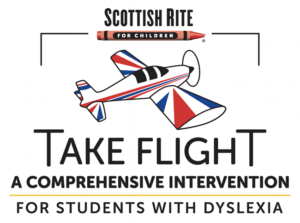 Take Flight: A Comprehensive Intervention for Students with Dyslexia is a curriculum written by Scottish Rite’s Center for Dyslexia staff. It builds on the success of Scottish Rite’s three previous dyslexia intervention programs: Alphabetic Phonics, Dyslexia Training Program and Scottish Rite for Children Literacy Program.
Take Flight: A Comprehensive Intervention for Students with Dyslexia is a curriculum written by Scottish Rite’s Center for Dyslexia staff. It builds on the success of Scottish Rite’s three previous dyslexia intervention programs: Alphabetic Phonics, Dyslexia Training Program and Scottish Rite for Children Literacy Program.
Take Flight contains the five components of effective reading instruction identified by National Reading Panel research.
Take Flight addresses each component by:
- Phonemic Awareness — following established procedures for explicitly teaching the relationships between speech-sound production and spelling-sound patterns
- Phonics — providing a systematic approach for single-word decoding
- Fluency — using research-proven directed practice in the repeated reading of words, phrases and passages to help students read newly encountered text more fluently
- Vocabulary – featuring multiple word learning strategies (definitional, structural, contextual) and explicit teaching techniques with application in text
- Reading Comprehension – teaching students to explicitly use and articulate multiple comprehension strategies (e.g., cooperative learning, story structure, question generation and answering, summarization and comprehension monitoring)
Take Flight was designed for use by individuals trained to the therapy level for children with dyslexia ages 7 and older. The comprehensive program is ideally taught:
- four days per week (60 minutes per day) or
- five days per week (45 minutes per day).
It is intended for small-group instruction with no more than six students per group.
Take Flight meets the required standards set forth by all states, including Texas. Because Take Flight is taught by those trained to the therapy level, it can be used to meet the needs of Special Education students identified with dyslexia who require specially designed instruction.
Take Flight is taught daily in the Center for Dyslexia’s lab school. The lab school gives the Scottish Rite staff the opportunity to learn from students with dyslexia and improve Take Flight strategies.
Download the Information Sheet
Key Research Findings
-
- Students who complete Take Flight show significant growth in target skills
- Students with the lowest reading skills improve the most with Take Flight instruction
- Follow-up research shows students maintain word reading and reading comprehension skills for four years after completing the intervention
- Research in public schools shows similar student growth when Take Flight is taught by teachers with advanced training in learning disorder treatment
Download Our Research At-A-Glance Document
Download Take Flight Research Summary.
Therapist Training
The Luke Waites Center for Dyslexia & Learning Disorders offers a comprehensive therapist training program for certified Texas public school teachers.
Scottish Rite’s Academic Language Therapist training is accredited by The International Multi-Structured English Language Education Council (IMSLEC)
General Program Information for training at Scottish Rite for Children
The course offers training in:
- Educational identification of dyslexia
- Characteristics of dyslexia
- Take Flight: A Comprehensive Intervention for Students with Dyslexia, a multisensory, structured approach to teaching:
- Phonemic awareness
- Phonic skills
- Vocabulary
- Fluency
- Comprehension skills
- Spelling
- Handwriting
- Classroom strategies and techniques used for students with dyslexia
- Conducting parent and teacher information seminars
Candidates for the training must:
- Be employed by a Texas public school
- Hold a teaching certificate
- Have administrative support
Length of the Program
- Two Years
Brief description of the two years:
Year One
- Orientation Seminar
- Introductory Course includes
- Sixteen (16) weekdays in the summer
- Monday-Thursday
- 8:00 am – 4:00 pm
- Four (4) Introductory Seminars during the school day
- Five (5) video demonstration lessons
- One (1) approved professional conference
Year Two
- Five (5) days in the summer
- Advanced Course includes
- Monday – Friday
- 8:00 am – 4:00 pm
- Four (4) advanced seminars during the school day
- Five (5) video demonstration lessons
- One (1) approved professional conference
To request an application for therapist training: Please send your name and home address, along with your school district name and address to [email protected] or call (214) 559-7800 or (800) 421-1121, ext. 7800.
TRAINING COURSE PARTNERS ACROSS TEXAS AND THE UNITED STATES TRAINING IN TAKE FLIGHT
- Academy District 20 (Colorado)
- Access Learning Academy (Arkansas & Missouri)
- Allies - District 49 (Colorado)
- Colorado Literacy and Learning Center (Colorado Springs, Colorado)
- Cradle to Career (Kansas)
- Dyslexia Center of Austin (Austin, TX)
- Dyslexia Training Center of Waco (Waco, TX)
- Education Service Center 11 (Fort Worth, TX)
- Education Service Center 20 (San Antonio, TX)
- Education Service Center 7 (Kilgore, TX)
- Education Service Center 8 (Pittsburg, TX)
- Education Service Center 14 (Abilene, TX)
- Frisco ISD (Frisco, TX)
- Fundamental Learning Center (Wichita, Kansas)
- Garland ISD (Garland, TX)
- Gould Training Center (San Antonio, TX)
- Hoover Learning Group (Tennessee)
- JPW Learning Center (San Angelo, TX)
- Learning Solutions
- Literacy Now (Colorado)
- Lovejoy ISD (Lucas, TX)
- McKinney Christian Academy (McKinney, TX)
- Northeast Texas Dyslexia Training (Northeast TX)
- Payne Education Center (Oklahoma City, OK)
- Plano ISD (Plano, TX)
- Richardson ISD (Richardson, TX)
- Scottish Rite Learning Center (Las Cruces, NM)
- Scottish Rite Learning Center of South Texas (San Antonio, TX)
- Scottish Rite Learning Center of West Texas (Amarillo, TX)
- Scottish Rite Learning Center of West Texas (Lubbock, TX)
- Shelton Academic Reading Approach (Dallas, TX)
- South San Antonio ISD (San Antonio, TX)
- Springfield Center for Dyslexia & Learning (Springfield, Missouri)
- The Written Word (Wheaton, IL)
ORDER OUR CURRICULUM
Take Flight: A Comprehensive Intervention for Students with Dyslexia is available for purchase.
Please Note: Only Take Flight-trained therapists can purchase the Take Flight materials and will be required to provide the name of their Training Center and Course Director.
If this is your first time ordering Take Flight materials, or you do not know your account number, you must request a Scottish Rite account number.
- If you plan to purchase the curriculum with a school district purchase order, the account you request should be in the same name as the purchase order. The same applies if using a school credit card.
- If you plan to order the curriculum with your personal credit card, the new account should be in the same name as the credit card and the credit card billing address.
Request Account
If this is your first time ordering materials from the Luke Waites Center for Dyslexia & Learning Disorders, please complete this request form.
After completing the request form, your account number will be sent within three business days via the email you provided. Username and password will be sent from [email protected]. You can then log in and complete your order.
New customer? See the "Order Curricula" tab.
If you already have a Scottish Rite account number or have previously purchased Rite Flight or Take Flight materials, please use the order form. Be sure to have your account number ready to expedite the process.
- All curriculum orders are shipped GROUND. Please provide a physical address with city, state and zip.
- All sales are final.
- Please contact [email protected] if you need to reset your password.
Questions? Call 214-559-7800.
Bridges
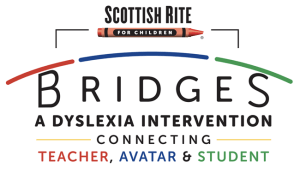
Bridges: A Dyslexia Intervention Connecting Teacher, Avatar and Student is a carefully designed curriculum that directly aligns with Scottish Rite's research-based Take Flight curriculum. The difference between the two programs is that Take Flight is solely designed for use by individuals trained to the therapy level, whereas Bridges is a scripted curriculum that teams a dyslexia interventionist with the digital avatar teacher Ms. Hallie.
It takes two years of training to become a therapist for Take Flight. Bridges requires a 10-day training for the interventionist.
Bridges is designed to maintain high-quality, research-based and highly effective dyslexia instruction while reducing teacher training time. Bridges’ ultimate goal is to give more students the opportunity to receive the instruction needed for reading success.
Like Take Flight, Bridges is designed for students with dyslexia ages 7 years and older. Ideally, students receive instruction:
- four days per week (60 minutes per day) or
- five days per week (45 minutes per day).
It is intended for small-group instruction with no more than six students per group.
Bridges requires a full-time certified teacher who will follow a script for three-fourths of the lesson. The other one-fourth of the lesson will be co-taught by Ms. Hallie.
Download the Information Sheet
Key Research Findings
- Our research compared literacy outcomes between Bridges students and those receiving the validated Take Flight intervention
- Participants included 162 North Texas public school children in second to fifth grade (½ Bridges students, ½ Take Flight students)
- Students were tested before and after the two-year intervention and at the one-year mark
- The two groups demonstrated similar growth in written language skills, with significant improvements over the course of the intervention
- Suggests that the tech-assisted Bridges intervention and the traditional Take Flight intervention are similarly effective in improving literacy outcomes for students with dyslexia
Download Our Research At-A-Glance Document
Bridges Interim Efficacy Report
Order Our Curriculum
Bridges: A Dyslexia Intervention Connecting Teacher, Avatar & Student is available for purchase.
If this is your first time ordering curricula or you do not know your account number, you must request a Scottish Rite account number.
- If you plan to purchase the curriculum with a school district purchase order, the account you request should be in the same name as the purchase order. The same applies if using a school credit card.
- If you plan to order the curriculum with your personal credit card, the new account should be in the same name as the credit card and the credit card billing address.
Request Account
If this is your first time ordering materials from the Luke Waites Center for Dyslexia & Learning Disorders, please complete this request form.
After completing the request form, your account number will be sent within three business days via the email you provided. Username and password will be sent from [email protected]. You can then log in and complete your order.
New customer? See the "Order Curricula" tab.
If you already have a Scottish Rite account number or have previously purchased Rite Flight or Take Flight materials, please use the order form. Be sure to have your account number ready to expedite the process.
- All curriculum orders are shipped GROUND. Please provide a physical address with city, state and zip.
- All sales are final.
- Please contact [email protected] if you need to reset your password.
Questions? Call 214-559-7800.
Build: A K-1 Early Reading Intervention
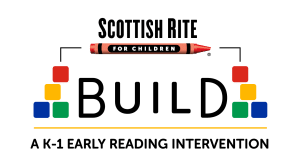
To meet the needs of the K-1 students who have been identified as at risk for dyslexia, the staff of the Luke Waites Center for Dyslexia & Learning Disorders at Scottish Rite for Children has developed a 100-lesson reading intervention called Build: A K-1 Early Reading Intervention. Build is a small-group intervention that addresses five specific components of reading intervention. Each component is taught developmentally using a direct, systematic, cumulative, multisensory method of introduction and practice to meet the specific needs of kindergarten and first-grade students struggling with reading.
The five components are:
- Alphabet: the identification of letters, sequencing skills and alphabetizing.
- Letter/sound knowledge: the direct instruction of individual letters and sounds, leading to the practice of reading words and sentences.
- Phonological awareness: the explicit introduction of the relationships between speech-sound production, from rhyme to spelling.
- Vocabulary: the direct teaching of strategies using context clues to infer the meaning of unfamiliar words.
- Comprehension: the explicit teaching of specific learning strategies used to identify the basic components of a story.
Download the Information Sheet
KEY RESEARCH FINDINGS
- Early elementary school students receiving the Build dyslexia intervention saw accelerated growth in lower- and higher-order reading skills
- The first- and second-grade students demonstrated statistically and clinically meaningful improvements in phonemic awareness, decoding, word reading, fluency and comprehension
Download Our Research At-A-Glance Document
Build Review of Supporting Evidence
Build TRAINING
For information about upcoming training dates, sign up for our email newsletter.
ORDER OUR CURRICULUM
Build: A K-1 Early Reading Intervention is available for purchase.
If this is your first time ordering curricula or you do not know your account number, you must request a Scottish Rite account number.
- If you plan to purchase the curriculum with a school district purchase order, the account you request should be in the same name as the purchase order. The same applies if using a school credit card.
- If you plan to order the curriculum with your personal credit card, the new account should be in the same name as the credit card and the credit card billing address.
Request Account
If this is your first time ordering materials from the Luke Waites Center for Dyslexia & Learning Disorders, please complete this request form.
After completing the request form, your account number will be sent within three business days via the email you provided. Username and password will be sent from [email protected]. You can then log in and complete your order.
New customer? See the "Order Curricula" tab.
If you already have a Scottish Rite account number or have previously purchased Rite Flight or Take Flight materials, please use the order form. Be sure to have your account number ready to expedite the process.
- All curriculum orders are shipped GROUND. Please provide a physical address with city, state and zip.
- All sales are final.
- Please contact [email protected] if you need to reset your password.
Questions? Call 214-559-7800.
Turbo Start

Turbo Start: A Dyslexia Curriculum for Newly Identified Students with Dyslexia is a nine-week, evidence-based dyslexia intervention that can be used as part of a standard protocol dyslexia instruction program. The Turbo Start program provides a jump start for newly identified students with dyslexia who need comprehensive dyslexia intervention while awaiting placement in an intervention group.
Each component of Turbo Start is taught developmentally using a direct, systematic, cumulative, multisensory method of introduction and practice to meet the specific needs of newly identified students with dyslexia.
Turbo Start is designed for:
- Newly identified individuals of all ages with dyslexia.
- Small-group instruction, up to 6 in a group.
- Use by the district's provider of dyslexia instruction after one day of training.
- Ideally, Turbo Start is taught four days per week (60 minutes per day) or five days per week (45 minutes per day).
TURBO START TRAINING
For information about upcoming training dates, sign up for our email newsletter.
ORDER OUR CURRICULUM
Turbo Start: A Dyslexia Curriculum for Newly Identified Students with Dyslexia is available for purchase.
If this is your first time ordering curricula or you do not know your account number, you must request a Scottish Rite account number.
- If you plan to purchase the curriculum with a school district purchase order, the account you request should be in the same name as the purchase order. The same applies if using a school credit card.
- If you plan to order the curriculum with your personal credit card, the new account should be in the same name as the credit card and the credit card billing address.
Request Account
If this is your first time ordering materials from the Luke Waites Center for Dyslexia & Learning Disorders, please complete this request form.
After completing the request form, your account number will be sent within three business days via the email you provided. Username and password will be sent from [email protected]. You can then log in and complete your order.
New customer? See the "Order Curricula" tab.
If you already have a Scottish Rite account number or have previously purchased Rite Flight or Take Flight materials, please use the order form. Be sure to have your account number ready to expedite the process.
- All curriculum orders are shipped GROUND. Please provide a physical address with city, state and zip.
- All sales are final.
- Please contact [email protected] if you need to reset your password.
Questions? Call 214-559-7800.
JET
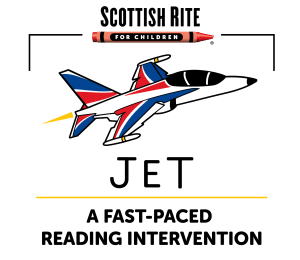
Jet: A Fast-Paced Reading Intervention is a curriculum written by the staff of the Luke Waites Center for Dyslexia & Learning Disorders. It is a one-year, fast-paced dyslexia intervention intended to meet the needs of older learners identified with dyslexia.
Jet was designed for:
- Individuals with dyslexia thirteen years of age and older.
- Small-group instruction with no more than 6 students in a group.
- Use by individuals trained specifically in Jet.
- Ideally, Jet is taught four days per week (60 minutes per day) or five days per week (45 minutes per day).
Download the Information Sheet
KEY RESEARCH FINDINGS
Students receiving Jet instruction demonstrated improved:
- word reading
- phonological awareness
- decoding
- reading comprehension
All essential elements that advance a student’s literacy skills
Download Our Research At-A-Glance Document
JET TRAINING
- Jet is a one-day training for Take Flight therapists.
- For teachers training to the practitioner level, Jet requires eight-day training.
For information about upcoming training dates, sign up for our email newsletter.
ORDER OUR CURRICULUM
Jet: A Fast-Paced Reading Intervention is available for purchase.
If this is your first time ordering curricula or you do not know your account number, you must request a Scottish Rite account number.
- If you plan to purchase the curriculum with a school district purchase order, the account you request should be in the same name as the purchase order. The same applies if using a school credit card.
- If you plan to order the curriculum with your personal credit card, the new account should be in the same name as the credit card and the credit card billing address.
Request Account
If this is your first time ordering materials from the Luke Waites Center for Dyslexia & Learning Disorders, please complete this request form.
After completing the request form, your account number will be sent within three business days via the email you provided. Username and password will be sent from [email protected]. You can then log in and complete your order.
New customer? See the "Order Curricula" tab.
If you already have a Scottish Rite account number or have previously purchased Rite Flight or Take Flight materials, please use the order form. Be sure to have your account number ready to expedite the process.
- All curriculum orders are shipped GROUND. Please provide a physical address with city, state and zip.
- All sales are final.
- Please contact [email protected] if you need to reset your password.
Questions? Call 214-559-7800.
Rite Flight
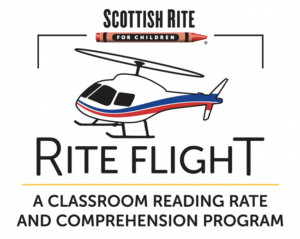
Rite Flight: A Classroom Reading Rate Program and Rite Flight: A Classroom Comprehension Program are curricula written by the staff of the Luke Waites Center for Dyslexia & Learning Disorders at Scottish Rite for Children. These programs equip teachers and reading specialists to help students increase their reading rate, fluency, and comprehension.
Rite Flight programs were designed to be Tier II interventions for use by classroom teachers, reading specialists and special education teachers with first through eighth grade students. They can be used as supplemental or intervention instruction for individuals, small groups or the whole classroom.
These programs can be used in conjunction with a variety of core reading curricula that employ evidence-based components in phonemic awareness and phonics. Rite Flight programs may be used for more intensive instruction within the framework of a Response-to-Intervention (RTI) model.
When used as a supplement, Rite Flight programs should be integrated into a core reading program to adequately address fluency and/or comprehension.
Rite Flight: Rate differs from standard reading fluency instruction by using a method of instruction designed to promote the recognition of letter clusters within words. Students follow a repeated reading schedule that introduces the same words in isolation, in phrases and finally in stories. As a fluency component of primary grade reading remediation and instruction, Rite Flight: Rate should be introduced early in the course of instruction in letter-sound recognition and should not be delayed until after phonics has been taught.
The instructional strategies of Rite Flight: Comprehension may serve as a component of intensified reading instruction within the framework of an RTI model. The decision to use the curriculum as an intervention for struggling readers should be guided by an evaluation of possible causes of reading comprehension problems.
Rite Flight programs are not intended to be used in place of a comprehensive intervention for students identified with dyslexia, as each addresses only one component of reading.
KEY RESEARCH FINDINGS
- Rite Flight: Rate instruction on reading rate at the word level shows similar transfer to text-level reading fluency as text-level reading rate practice.
- The word-level fluency training used in the Rite Flight: Rate program resulted in stronger absolute gains in word reading accuracy when reading connected text in comparison to text-level fluency programs.
- Response to treatment was stronger in younger students.
ORDER OUR CURRICULUM
The Rite Flight: Rate and Rite Flight: Comprehension programs are available for purchase.
If this is your first time ordering curricula, you must request a Scottish Rite account number.
- If you plan to purchase the curriculum with a school district purchase order, the account you request should be in the same name as the purchase order. The same applies if using a school credit card.
- If you plan to order the curriculum with your personal credit card, the new account should be in the same name as the credit card and the credit card billing address.
Request Account
If this is your first time ordering materials from the Luke Waites Center for Dyslexia & Learning Disorders, please complete this request form.
After completing the request form, your account number will be sent within three business days via the email you provided. Username and password will be sent from [email protected]. You can then log in and complete your order.
New customer? See the "Order Curricula" tab.
If you already have a Scottish Rite account number or have previously purchased Rite Flight materials, please use the order form. Be sure to have your account number ready to expedite the process.
- All curriculum orders are shipped GROUND. Please provide a physical address with city, state and ZIP code.
- All sales are final.
- Please contact [email protected] if you need to reset your password.
Questions? Call 214-559-7800.
ORDER CURRICULA
We want you to have everything you need to deliver high-quality dyslexia instruction with consistency and confidence.
If this is your first time ordering curricula or you do not know your account number, you must request a Scottish Rite account number.
- If you plan to purchase the curriculum with a school district purchase order, the account you request should be in the same name as the purchase order. The same applies if using a school credit card.
- If you plan to order the curriculum with your personal credit card, the new account should be in the same name as the credit card and the credit card billing address.
Request Account
If this is your first time ordering materials from the Luke Waites Center for Dyslexia & Learning Disorders, please complete this request form.
After completing the request form, your account number will be sent within three business days via the email you provided. Username and password will be sent from [email protected]. You can then log in and complete your order.
If you already have a Scottish Rite account number or have previously purchased Rite Flight or Take Flight materials, please use the order form. Be sure to have your account number ready to expedite the process.
- All curriculum orders are shipped GROUND. Please provide a physical address with city, state and zip.
- All sales are final.
- Please contact [email protected] if you need to reset your password.
Questions? Call 214-559-7800.
Dyslexia Curriculum & Training
ACADEMIC LANGUAGE THERAPIST
The Luke Waites Center for Dyslexia & Learning Disorders at Scottish Rite offers a two-year training program for teachers to become Academic Language Therapists. Training candidates must be:
- Employed by a Texas public school
- Hold a valid Texas teaching certificate
- Have written support from their school district (e.g., district administrator)
Our program is accredited by the International Multisensory Structured Language Educational Council.
Program graduates are eligible to sit for a certification exam at the therapy level. They can also receive 15 hours of graduate-level credit through Midwestern State University.
Topics covered in the training include:
- Educational identification of dyslexia
- Characteristics of dyslexia
- Take Flight: A Comprehensive Intervention for Students with Dyslexia
- Multisensory, structured teaching approaches
- Phonemic awareness
- Phonic skills
- Vocabulary
- Fluency
- Comprehension skills
- Spelling
- Handwriting
- Classroom strategies and techniques used for students with dyslexia
- Conducting parent and teacher information seminars
Program Structure At-A-Glance
Year One
- Orientation Seminar
- Introductory training across 15 weekdays in the summer (Mon-Fri, 8:00 am – 4:00 pm)
- Four introductory seminars during the school day
- Five video demonstration lessons
- One approved professional conference
Year Two
- Advanced course training across five days in the summer (Mon – Fri, 8:00 am – 4:00 pm)
- Four advanced seminars during the school day
- Five video demonstration lessons
Program graduates are eligible to teach Scottish Rite’s Take Flight curriculum. Additional 1-day trainings required to teach Scottish Rite’s Build, Jet, and Turbo Start curricula.
To request a therapist training application: Please send your name and home address, along with your school district name and address, to [email protected] or call (214) 559-7800 or (800) 421-1121, ext. 7800.
DYSLEXIA PRACTITIONER
The Center for Dyslexia offers a one-year training for teachers to become dyslexia practitioners. Training candidates must be:
- Employed by a Texas public school
- Hold a valid Texas teaching certificate
- Work in a setting where they can teach at least one group of secondary students ages 14+
- Have written support from their school district (e.g., district administrator)
Program graduates are eligible to sit for a certification exam at the practitioner level.
Training topics include:
- Characteristics of dyslexia
- Jet: A Fast-Paced Reading Intervention
- Multisensory, structured teaching approaches
- Phonemic awareness
- Phonic skills
- Vocabulary
- Fluency
- Comprehension skills
- Spelling
- Handwriting
- Classroom strategies and techniques used for students with dyslexia
Program Structure:
- Orientation Seminar
- Introductory training across 5 days in the summer (Mon-Fri, 8:00 am – 4:00 pm)
- Three seminars throughout the year during the school day
- Five video demonstration lessons
Program graduates are also eligible to teach Scottish Rite’s Turbo Start or Build curricula by attending additional training days.
To request a practitioner-level training application, please send your name and home address, along with your school district name and address to [email protected] or call 214-559-7800 or (800) 421-1121, ext. 7800.
CERTIFIED TEACHER
The Center for Dyslexia offers abbreviated training for classroom and special education teachers to co-teach the Bridges program with a digital instructor, Ms. Hallie. The 10-day training program spreads across two years—7 instructional days in the first year and three instructional days in the second.
Certified teachers can earn up to 70 hours toward Academic Language Therapist training as they co-teach Bridges with Ms. Hallie.
Although graduates of this program are not eligible to teach Take Flight, they can provide instruction in Scottish Rite’s other curricula, including Build, Jet and Turbo Start.
An additional one-day training is required to teach Build and Turbo Start. An additional eight-day training is required to teach Jet.
Dyslexia and Learning Disorders Research
Below you will find research reports that range from quick snapshots to in-depth studies. You can also review the history of our research efforts to show how our work has evolved over time.
Executive Summaries
Research Reports
- Take Flight Research Summary
- Bridges Interim Efficacy Report
- Build Review of Supporting Evidence
- Jet Pilot Report
- The Response of English Language Learners to English-language Dyslexia Intervention: Post intervention
Our Research’s Real-World Impact
Since 1965, Luke Waites Center staff have created, published and continually improved evidence-based dyslexia curricula in addition to providing excellent care for patients and children who need dyslexia education.
The center’s expertise inspires research projects that further influence training and education, and the cycle continues — stimulating outstanding care and better outcomes for patients and their families.
Through forward-thinking research, Scottish Rite is driven to continue finding ways to improve reading skills and comprehension. Our research program is focused on enhancing the understanding of dyslexia and learning disorders as well as treatment.
Advancing Dyslexia Curricula Through Research
Research studies that have tested the effectiveness of Take Flight show that students demonstrate significant improvements in reading and language skills. The curriculum’s structure leads to better reading accuracy and retention, resulting in students who are better prepared to become successful, independent readers.
Follow-up research has shown that students experience long-term retention and comprehension skills, which demonstrate the intervention’s lasting impact on reading ability. Research efforts to evaluate the impact of treatment and optimize student outcomes influence curricula revisions to meet ongoing needs of students and educators.
Revealing the Benefits of Dyslexia Interventions
In a groundbreaking research discovery, Scottish Rite found that students with dyslexia exhibit differences in the connections between language centers in the brain, which are related to reading.
After students completed dyslexia intervention, new areas were active in the brain, many of which were similar to patterns of brain activity in children without dyslexia. Normalized brain activity was linked to better reading performance — a leading-edge finding that shows the benefits of a transformative dyslexia intervention program.
Additional studies have aimed to answer questions regarding diagnosis and treatment across a diverse set of learners and contexts, as well as how individual child characteristics may impact diagnosis and treatment. In collaboration with other investigators, the team has also worked to understand how dyslexia laws impact education and children.
Learn more about our research.
Sign up for our Email Newsletter for Educators
Interested in receiving updates about our curricula, upcoming trainings, conferences, research and the latest news? Get practical advice from our experts and keep up with the many exciting things going on at Scottish Rite. Sign Up for our Email Newsletter.
Latest news: Dyslexia
WFAA: Scottish Rite’s Luke Waites Center Drives Dyslexia Research and Education
WFAA recently featured the Luke Waites Center for Dyslexia and Learning Disorders at Scottish Rite for Children in honor of Dyslexia Awareness Month. For more than 60 years, the Center has transformed…
Spectrum News 1: Fort Worth ISD approves launch of Bridges and Take Flight Programs
Fort Worth ISD is celebrating significant gains in 2025 STAAR test scores, with most grade levels and subjects showing improvement and several surpassing district targets. At a recent board meeting, the district…
DFWChild: Decoding Dyslexia and Depression
Scottish Rite for Children\'s Luke Waites Center for Dyslexia and Learning Disorders was established to help identify and treat children with various learning disorders, such as dyslexia. Dyslexia is a learning difference…
Scottish Rite for Children Creates Web-Based Dyslexia Program to Meet Growing Demand
Scottish Rite for Children has expanded its award-winning suite of dyslexia curricula with the launch of a web-based intervention that reduces teacher training time and cost while preserving high-quality, evidence-based instruction. The…
Levi Soars To Success With Take Flight
“We thank God for connecting us with Scottish Rite,” says Levi’s dad, Josh. “Levi was unable to recognize his letters when we first arrived, and now he’s reading chapter books.” Nine-year-old Levi,…
Recognizing Early Signs of Dyslexia in Preschoolers
Dyslexia is the most common learning disorder in the United States, making up approximately 80% of all diagnosed learning disorders, according to the American Psychiatric Association. When not addressed, dyslexia can lead from simple issues…
Anxiety in Children with Dyslexia
Anxiety is one of the most common mental health challenges in children, and it affects one in eight children in the United States. While the condition is not unusual, it can present…
Get to Know our Staff: Judy Sneed, Center for Dyslexia
What is your job title/your role at Scottish Rite for Children? I am a department assistant within the Luke Waites Center for Dyslexia and Learning Disorders. What do you do on a daily…
Get to Know our Staff: Dachia Kearby, Center for Dyslexia
What is your job title/your role at Scottish Rite for Children?My job title is dyslexia therapist. What do you do on a daily basis or what sort of duties do you have…
Get to Know our Staff: Sheila Burton Adams, Center for Dyslexia
What is your job title/your role at Scottish Rite for Children? I am an assessment specialist on the Diagnostic Team in the Luke Waites Center for Dyslexia and Learning Disorders. What do…


